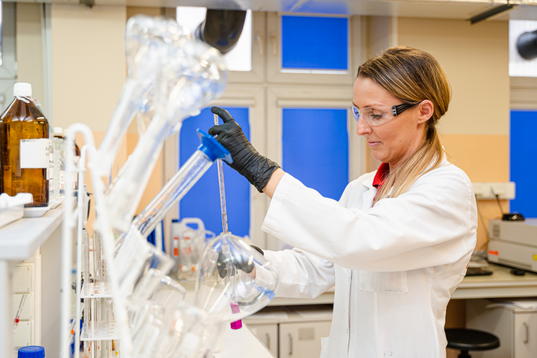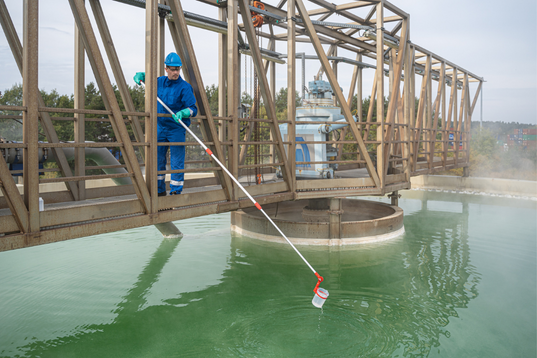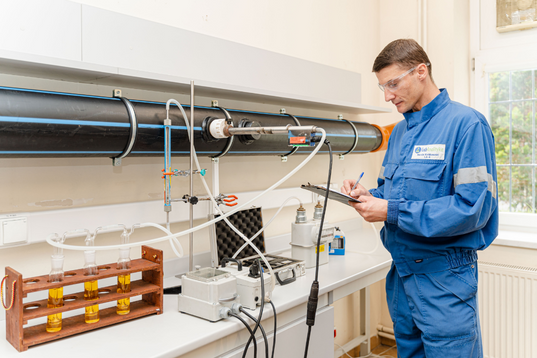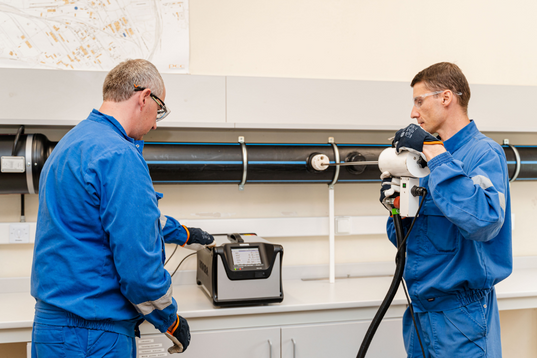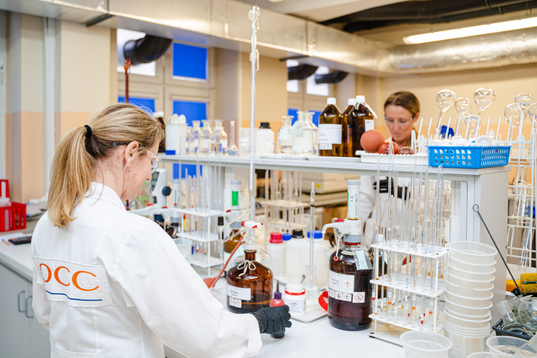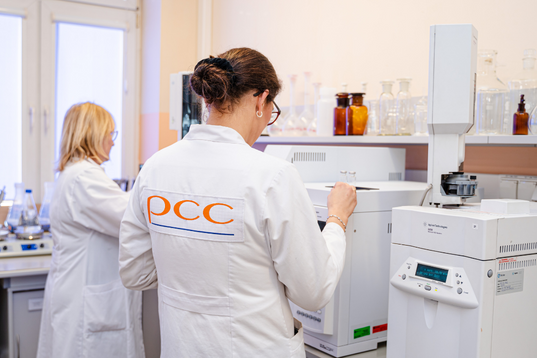
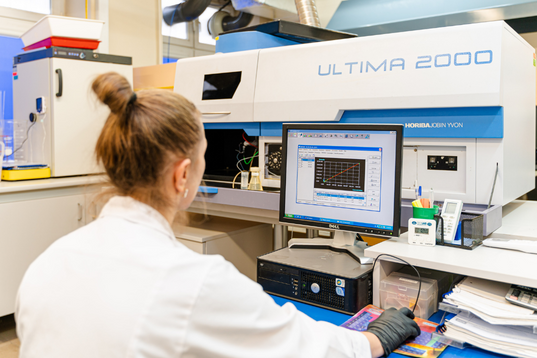
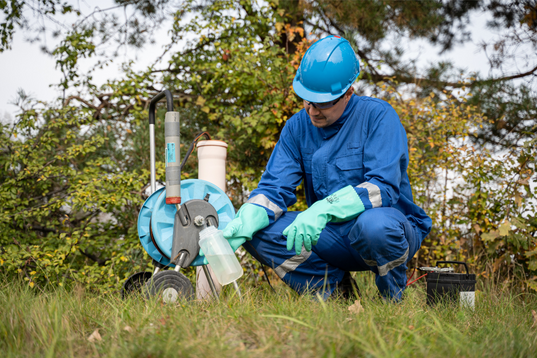
High competences of our laboratory personnel and the use of innovative control and measurement instruments enable us to conduct professional laboratory tests of water, wastewater, waste, sludge, soil and air samples. The reliability and validity of our tests is verified by implementing programmes aimed at ensuring validity of our test results and by participating in proficiency tests (PT) and inter-laboratory comparisons (ILC).
The Environmental Testing Laboratory supports the PCC Group’s activities beyond the area of environmental monitoring, too. We also test process samples (e.g. boiler, feed and cooling water samples) and soil samples associated with investments on the PCC Group’s sites.
Working environment measurements are also an important part of the Environmental Research Laboratory’s operations.
In order to monitor water, wastewater and air quality, our laboratory uses the latest instrumental techniques, i.e. ICP-OES spectrometry, ASA, gas chromatography, ion chromatography, HPLC, carbon analysers, mercury analysers, AOX analysers as well as traditional methods (titration, gravimetric metods).
In accordance with the applicable legislation (Environmental Protection Law, Journal of Laws 2021.1973, dated 2021.10.29), the operator of theinstallation and the user of the appliance are obliged to ensure measurements of emissions or other conditions of the use of the environment, including sampling by an accredited laboratory.
For the PCC Group, periodic measurements of air emissions from stationary sources are carried out by the Environmental Testing Laboratory. Emission measurements are conducted for a broad range of substances using various techniques, including both collection and analysis.
In the case of periodic measurements, sampling is performed on industrial installations, often at high altitude and under adverse conditions. For the measurements to be carried out as required, a relevant platform must be provided that meets the applicable requirements of safety and dimensions. The people who perform emission measurements are provided with appropriate protective equipment, including safety helmets, safety harnesses, safety goggles and gas masks.
Emission measurements include planning, sampling, analysis and presentation of the test results.
Before measurements are taken, the following activities must be performed:
Air sampling consists in passing air through a cartridge that contains a sorbent or a membrane filter selected specifically to absorb the pollutants whose concentration in the air is to be determined. Since a stable flow rate aspirator is used, air is sucked in at a desired constant flow rate (in accordance with the Polish Standards on determining the concentration of a specific contaminant). Sampling must be performed in such a way as to ensure:
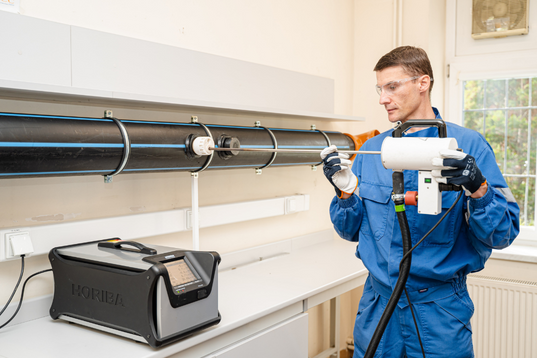
When the measurements are taken, samples are delivered to the laboratory, and relevant determinations are made, we need to report the results of our tests and measurements.
Reports on the measurement of flue gas emissions are strictly regulated (a legally regulated area: Regulation of the Minister of Climate and Environment of 15 December 2020 on the types of results of measurements carried out in connection with the operation of an installation or equipment and other data collected as a result of monitoring technological processes, as well as the timing and means of presentation) and contains very detailed information regarding, among others, production installations, integrated permits for installations, emission sources, measurement service providers, and the operating time of the installation or equipment. Concentrations of the tested substances are provided in the report under measured conditions, normal conditions, contract conditions and contract conditions per oxygen content.
Laboratory specialists who prepare the inspection report have extensive technical knowledge and knowledge about measurement uncertainty, and take account of the requirements of relevant normative and regulatory provisions.
The terms and conditions for monitoring landfills have been provided in the Waste Management Act and in implementing acts, such as the Regulation of the Minister of the Environment on landfills.
Laboratory monitoring includes, among others, the evaluation of groundwater. Samples of groundwater are taken by sampling technicians using devices called piezometers. Piezometers are used for taking groundwater samples as well as measuring groundwater levels. Water level measurements are performed wiyh the use of so-called vent whistles. We can also measure the temperature of waters on site. In the laboratory, we test water samples for chemical parameters, such as pH, electrical conductivity, COD, TOC.
In order to be allowed to operate in a regulated domain, i.e. to perform measurements and tests in an area regulated by state laws defining the relevant requirements, the Laboratory has implemented a quality management system for testing and calibration laboratories in compliance with PN-EN ISO/IEC 17025.
The Environmental Testing Laboratory obtained its accreditation on 27.10.2008.
The first accreditation included 23 testing methods, while the 17th edition of the scope of the accreditation dated 22.08.2022 includes as many as 225 testing methods.




